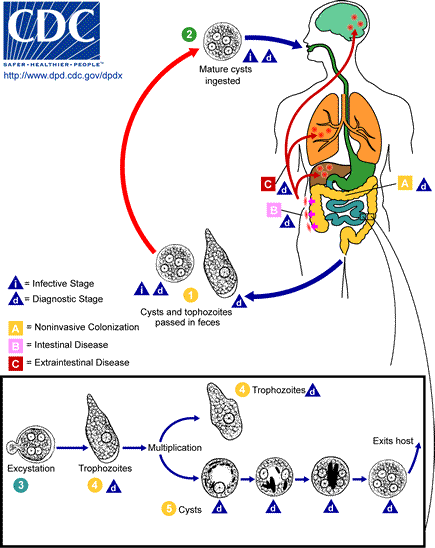Fil:Entamoeba histolytica Amebiasis LifeCycle.gif
Entamoeba_histolytica_Amebiasis_LifeCycle.gif (435 × 548 billedpunkter, filstørrelse: 28 KB, MIME-type: image/gif, 0,2 s)
Filhistorik
Klik på en dato/tid for at se filen som den så ud på det tidspunkt.
| Dato/tid | Miniaturebillede | Dimensioner | Bruger | Kommentar | |
|---|---|---|---|---|---|
| nuværende | 29. apr. 2006, 16:26 |  | 435 × 548 (28 KB) | Patho | {{Information| |Description= Amebiasis [Entamoeba histolytica] Life Cycle of Entamoeba histolytica Cysts and trophozoites are passed in feces . Cysts are typically found in formed stool, whereas trophozoites are typically found in diarrheal stool. |
Filanvendelse
Den følgende side bruger denne fil:
Global filanvendelse
Følgende andre wikier anvender denne fil:
- Anvendelser på cs.wikipedia.org
- Anvendelser på de.wikibooks.org
- Anvendelser på he.wikipedia.org
- Anvendelser på hu.wikipedia.org
- Anvendelser på id.wikipedia.org
- Anvendelser på pt.wikipedia.org
- Anvendelser på sv.wikipedia.org


